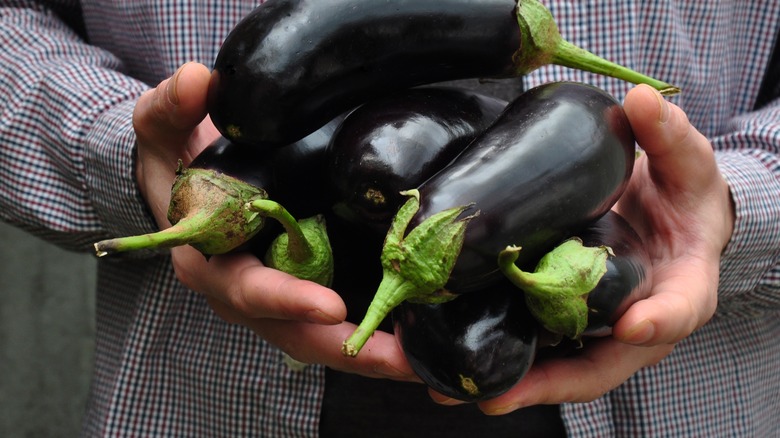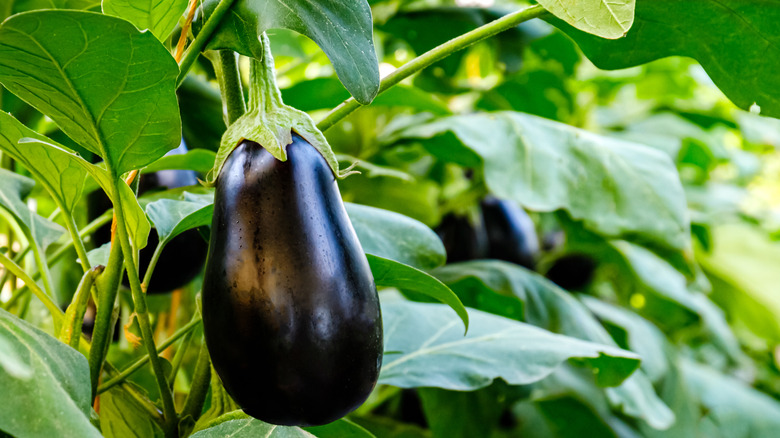Here's How To Tell If Eggplant Has Gone Bad
Featured in everything from a saucy eggplant Parmesan to a spicy vegetarian stir-fry, eggplants are among the most versatile ingredients in the produce aisle. The popular nightshade, however, doesn't have an infinite shelf-life, lasting just five to seven days in the fridge (via Sweetwater Organic Farm).
When choosing an eggplant, there are certain characteristics to look for. According to SFGATE, healthy and fresh eggplants should ideally have a "smooth" and "shiny" surface and an even "purple-black color." Additionally, the exterior should be taut, uniform in texture, and free of blemishes or bruises.
EatingWell explains that a great eggplant will have a "fresh and earthy" scent. And in terms of weight, the nightshade should feel "heavy for its size" when you pick it up, a good indicator of the condition of the eggplant's flesh inside, per The Kitchn. When pressed with your finger, the eggplant should feel somewhat firm but not too firm. In other words, the fruit should indent slightly but bounce back after you remove your finger.
These are all excellent ways to tell if your eggplant is healthy, fresh, and ready to be used in a dish — but how can you tell if your eggplant has gone bad? Fortunately, there are a few simple tests to figure this out as well.
Signs an eggplant is less than fresh
Luckily, if you have an eggplant that's starting to look iffy, there are a few key indicators that can help you determine whether or not it's actually gone bad and if it's still safe to eat or not.
According to EatingWell, the color of eggplant can tell you a lot about the fruit. Ideally, an eggplant's stem and cap "should be green and fresh-looking," without any fading or signs of mold. Additionally, LEAFtv notes that if an eggplant's skin is looking "withered" or "wrinkly," it's usually a sign that it's heading toward spoilage. The same goes for if the eggplant itself feels "soft" or "squishy" to the touch.
As for the eggplant's flesh, interior browning can be a sign that the fruit has seen better days — but not always. In addition to spoilage, eggplants can have interior brown spots due to enzymatic browning, per AllRecipes. This latter type of browning, which results from the oxidation of eggplant flesh exposed to air, is superficial and perfectly safe to eat. If you are uncertain about the cause of an eggplant's brown spots, though, the outlet advises you look for additional signs that the eggplant has gone bad, such as its smell.
Per EatingWell, a spoiled eggplant will have a "slimy" texture and a smell on the other end of "fresh and earthy."

